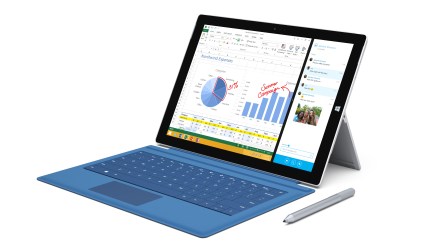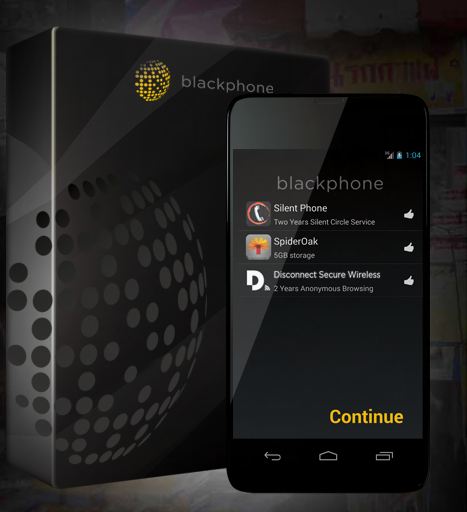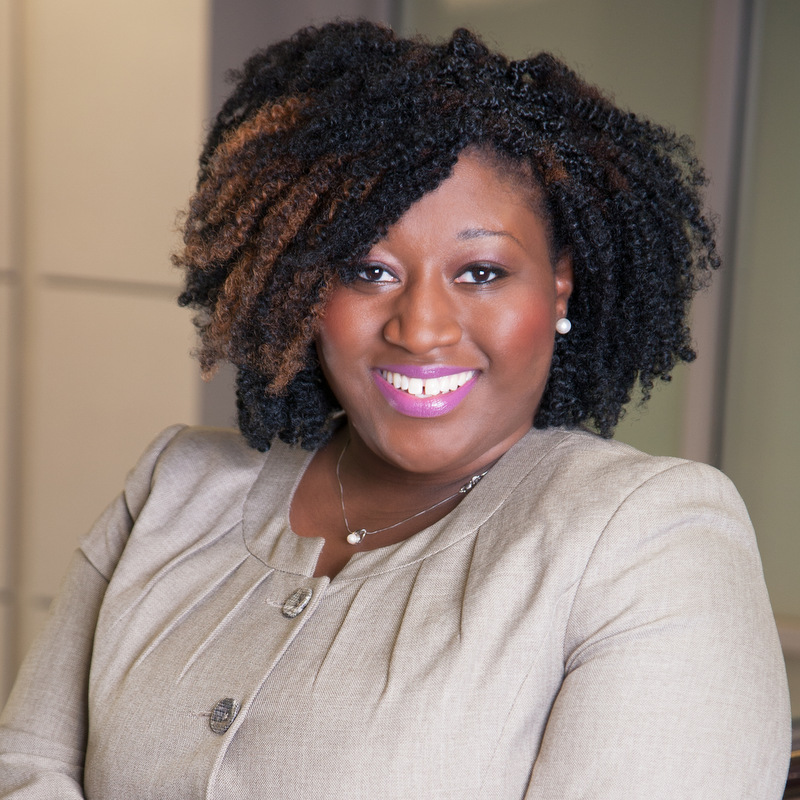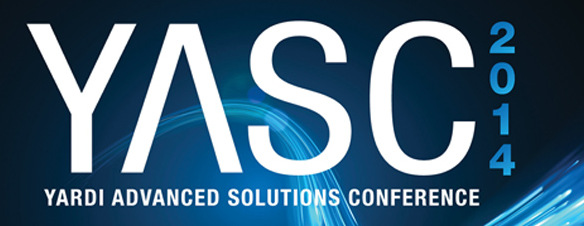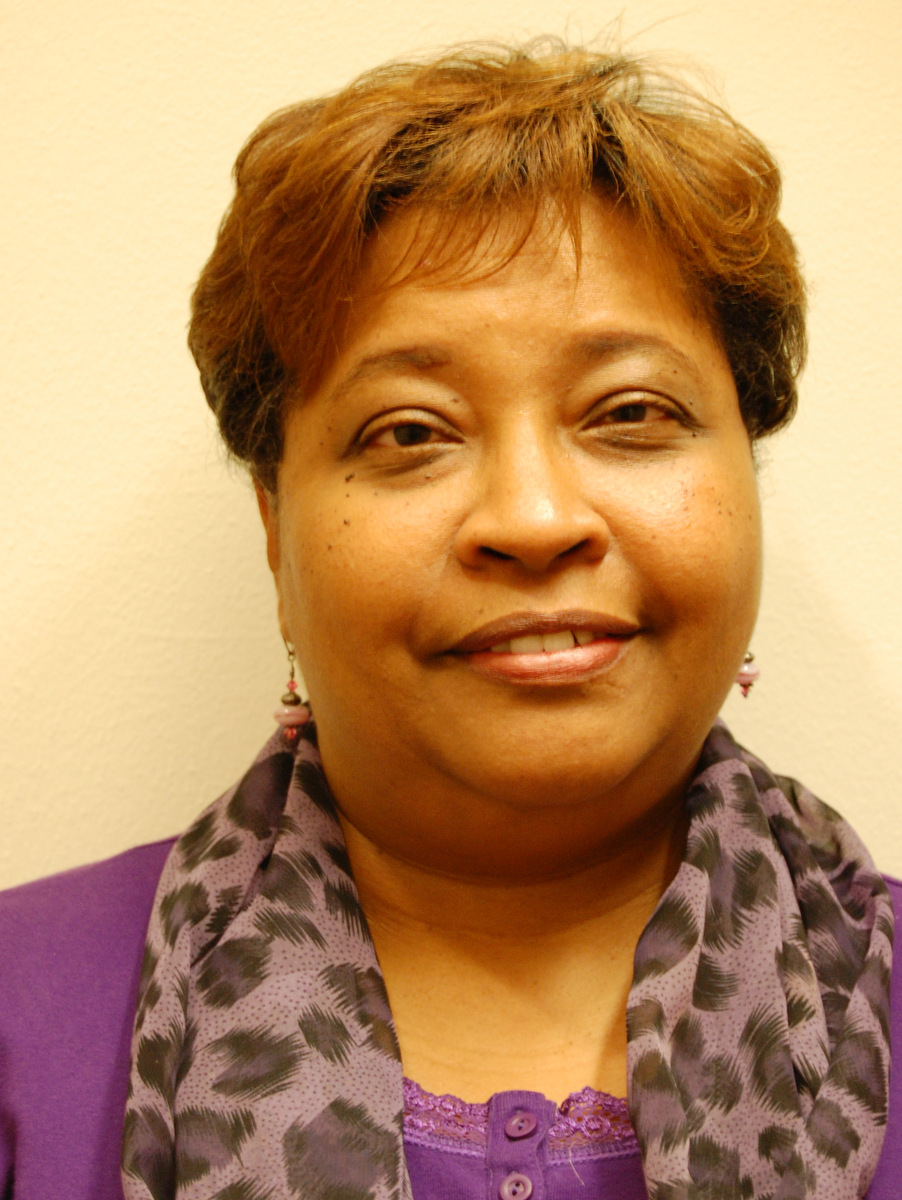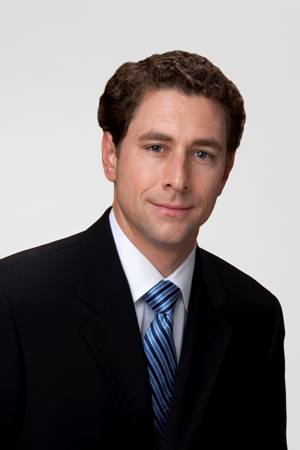The MHN Excellence Awards recognize the multifamily industry’s most noteworthy people, companies and properties. The 2014 winners will be selected by a panel of judges representing expertise across all multifamily disciplines. Submissions will be due by Monday, July 7 (deadline has been extended). Here’s how to enter. 1) Select the categories you’d like to enter and click to download those entry forms for rules and instructions; • Executive of the Year • Property Manager of the Year • Leasing Agent of the Year • Development Company of the Year • Property Management Company of the Year • Best Brokerage Office • Transaction of the Year • Best Apartment Community • Most Tech-Savvy Community • Best Marketing Program • Best Value-Add Renovation • Best New Development and Design • Best New Development: Unbuilt 2) After completing the entry form(s), click here to upload form and submit payment online (You still have the option of mailing us your entry as hard copy in a binder and/or paying by check; follow those instructions after you download the entry form from the list above.) If you have questions, contact Diana Mosher, Editorial Director at [email protected] Finalists will be announced in August at www.multi-housingnews.com and winners will be announced in September at a special event in New York and published in the October issue of the magazine. All winners will receive a personalized award for display in their office or multifamily...
Surface Pro 3
Slick, but no laptop replacement
“A tablet that can replace your laptop” was the catchphrase that introduced Microsoft’s Surface Pro 3 at its launch event. The world was waiting for Microsoft to enter the 8-inch tablet fray and launch a pure consumer device, without the Windows 8 interface (Desktop and Metro). Instead, the company went in the opposite direction. They decided to transition from tablets to notebooks via a device that runs on hardware too powerful for a tablet, but with a much thinner profile than a laptop. “Everything we’ve done up to this point is manifested in this product. This is our best device — we’re super proud of it,” said Steven Bathiche, in charge of the Applied Sciences Group at Microsoft. The shiny Surface Pro 3 has a few impressive features as well as some less positive aspects. The hardware – a roaring 4th generation Intel Core processor ranging from i3 to the mighty i7, 4 to 8GB of RAM, and storing options that go from 64GB to 512GB; The display – the screen aspect ratio closer to 3:2 compliments the tablet-face, being much better than the 16:10 that most Android tablets chose, and adds to web usage (16:9 and 16:10 are more suited to video) also on the tablet side Surface has the multi-touch feature and a vivid resolution of 2160 x 1440; Windows RT excused – removing this confusion is constructive; Battery life – the nine-hour battery life (on paper) puts it in the “all day device” category; Weight and thickness – we like our devices light and thin these days and Surface Pro 3 holds the award for the thinnest Intel Core product so far – 11.5” x 7.93” x 0.3”; it weighs 2.42lbs with keyboard attached; Target market – Surface Pro 3 doesn’t...
SCYAP
Social Enterprise through Art
Since 2001, Saskatoon Community Youth Arts Programming (SCYAP) has offered free visual and graphic arts training to aboriginal youth. Students can chose any of 13 afterschool programs, seven First Nation reserve courses, or attend sessions at SCYAP headquarters. In each setting, the organization provides a safe, encouraging space where youth can hone their art, transforming their raw talent into a source of hope, personal achievement, and income. Founder and Executive Director Darrell Lechman holds an extensive background in social services specializing in aboriginal youth. Through SCYAP, he is able to blend his skills as a youth advocate with his enthusiasm for the arts. It’s the perfect fit. “SCYAP has continued for 13 years because we are passionate about what we do,” says Lechman. But it takes more than passion to undo the effects of 130 years of systematic injustice towards one demographic. That’s why SCYAP uses art to gradually build trust and accountability. Both tools can ultimately lead to youth who are feel valued and are valuable contributors to society. Over 70% of SCYAP participants are of aboriginal ancestry. These youth face challenges that are unique to their situation: in addition to the barriers of poverty, youth experience prejudice, racism and classism that can result in distrust. In order for SCYAP staff to reach each student, they work consistently to build trust. “Without trust, the program is superficial,” says Lechman. Simultaneously, SCYAP uses art to instill responsibility and self-worth. Impoverished youth who have two working parents, or a single working parent, may not receive the accountability needed to foster responsibility at home. “There’s about 60 hours outside of school where kids are with friends or alone,” estimates Lechman. “If we can put them in an environment where they have some guidance, mentorship—where they can...
1,000 Clients Strong
Yardi Voyager 7S
Foundation for full-business real estate management platform features complete mobile capability and portfolio-wide business intelligence SANTA BARBARA, Calif. (June 4, 2014) – In less than a year, more than 1,000 companies have adopted Yardi Voyager® 7S, the latest and most advanced version of Yardi’s property management and accounting software. Yardi Voyager 7S works with all Internet browsers and is tablet compatible. Yardi Voyager 7S is fully integrated with many popular Yardi modules, including: Yardi Procure to Pay™ Yardi Orion™ Business Intelligence Yardi LeasingPad CRM™ and Yardi Commercial Leasing Pad™ RENTCafé™ and COMMERCIALCafé™ “The response to Voyager 7S and its companion modules has been very positive because they offer unprecedented functionality in a comprehensive and fully integrated suite of products,” said Terri Dowen, senior vice president of sales for Yardi. For most clients, the transition to Yardi Voyager 7S requires only a few days of training for their staff. “We have really enjoyed the increased efficiency we have experienced with Voyager 7S, including specific hotkey capabilities and auto-fill features,” said Rebecca Hill, chief financial officer for commercial and residential real estate developer Briarcliff Development Co. “The upgrade of our database to 7S was a seamless, literally overnight process.” “The navigation features are very efficient, so we instantly get property and resident information without going through a dozen steps. We also like the efficiency of customizable screens that restrict access to display types to users who need them,” said Larry Busgeon, controller for multifamily property manager Landmark Realty. “The system’s mobile capability and full integration with products such as RentCafe and Yardi Maintenance™ enhance both our resident service and staff efficiency. Residents can make payments online, including recurring ones, and our maintenance staff can manage work orders in the field without returning to the office.” “Landmark...
Awarded for Ethics
CBRE Group lauded
Pushing ethics to the top of its priority list has paid off for CBRE Group Inc., which has a long history of strong reputation management practices. Recently named one of the world’s most ethical companies by an independent assessor, the Ethisphere Institute, the global commercial real estate firm takes corporate values, which have a direct impact on business practices, exceptionally seriously. Those values inform processes, procedures and prioritization of compliance, risk management, communications and client security. At the heart of the effort is the CBRE RISE program, standing for “Respect, Integrity, Service, Excellence.” The company’s 44,000 global employees receive quarterly training sessions in ethics and compliance, delivered either online or in person. A compliance officer exists for each country where the company does business—55 in all. “If you hold up your individual corporate values, that will empower your people to feel confident and make the right decisions in difficult circumstances,” said Tyson Avery, chief ethics and compliance officer for CBRE, a Yardi client. “There’s no cookie-cutter commercial real estate transaction, and the same is true with the risks that we face. All scenarios are a little different.” Avery identifies cloud security, corruption, conflicts of interest and data privacy as all being areas of relatively high risk for global companies. Hence the prioritization by CBRE of best practices, which is enhanced not only by the frequent training sessions but maintenance of a hotline/helpline where employees can anonymously report any concerns. Ethisphere’s “World’s Most Ethical Companies” are recognized for their policies and actions, including ethical business standards and practices, exceeding legal compliance minimums and being industry leaders. For 2014, Jones Lang LaSalle Inc. and Reology Holdings Corp. were also recognized in the real estate sector. Marriott International was among the honorees in Leisure and...
Minimizing Risk
Building a brand
In the days after Malaysia Airlines flight MH370 mysteriously disappeared en route to Beijing in mid-March, PR and crisis management experts around the world watched the news and cringed. “I’m not so sure that you stay off their airline or their brand is ruined, but right now I don’t feel too good about Malaysia Airlines because of their very weak response,” said Roger Conner, an expert in crisis management for the hospitality industry, 10 days after the flight went missing. Conner’s expert opinion—he went through 9/11 and multiple other international terrorism incidents while vice president of communications for Marriott—was reinforced in the media. Canada’s National Post called it a “master class in crisis mismanagement,” both on the part of the airline and the Malaysian government. Malaysia Airlines was lauded for introducing a brand-agnostic website to provide crisis updates on the mysterious disappearance, but criticized for not working fast enough to determine exactly what had happened with the flight. And families of the passengers went so far as to emotionally and publicly protest the lack of information available while they waited anxiously for news in Beijing, the flight’s intended destination. With the news that the flight had been lost in the Indian Ocean, their complaints only intensified. There are many differences between the airline industry and real estate, but dealing with an unexpected crisis situation – one that could irrevocably change how the public views your brand – is a concern for any business. As the global economy expands, as dependence on technology becomes pervasive and social media saturation is a fact of life, companies find themselves with more risk factors to control than ever before. Preparation, brand management and the hopefully unneeded crisis response are now essential parts of any business toolkit. Increased Global Risk...
Keeping Up with E-Commerce
Impact on Retail Real Estate
As online sales continue to rise, the signs of the Internet’s impact on retail real estate are hard to According to projections by Forrester Research, cross-channel retail sales—including those influenced by online information but completed in stores—will hit $1.8 trillion by 2017, up from $1.2 trillion in 2012. Projections of new-store openings hold more subtle clues. Cassidy Turley estimates that restaurants will account for 43 percent of the 38,000 new-store openings expected this year. Until 2011, new-restaurant openings averaged only about 35 percent of the total. The result hints that online sales are contributing to a broad slowdown in non-restaurant retail expansion, according to Garrick Brown, director of research for Terranomics, Cassidy Turley’s retail affiliate. For retail real estate management, the implications of e-commerce are both far-reaching and complex. The much-noted preference for smaller footprints is a fact of life for many electronics retailers, department stores and other categories, which can treat their stores as showrooms, notes David Birnbrey, chairman & co-CEO of the Shopping Center Group. The influence of online shopping on this shift is impossible to miss. As a rule of thumb, Birnbrey says, the most likely products to be sold via e-commerce are those people don’t mind waiting for. For instance, according to the most recent estimates by the Census Bureau, computers and consumer electronics account for 22 percent of all Internet sales. Apparel, the runner-up, makes up 18 percent—the only other category to reach more than 10 percent of total online sales. Yet rising online sales do not negate the value of a strong brick-and-mortar presence for apparel retailers. Ordering a DVD online is one thing, but customers like to see clothing and try it on before taking out their wallets. In this fast-changing environment, retailers are expanding the complementary use of different retail channels. Fulfillment is one activity demonstrating robust growth, with bigger retailers increasingly fulfilling e-commerce orders from their stores, observes Bryan Jensen, vice president & principal of supply-chain strategy and logistics consulting firm St. Onge Co. By the end of last year, Best Buy Co. was offering its ship-from-store service at more than 400 locations. Macy’s, too, is expanding its omni-channel services, with plans to make fulfillment available at 500 stores. And in November, Gap Inc. expanded its “Reserve in Store” service to more than 200 Gap stores in 15 markets as well as its entire Banana Republic portfolio. Customers are invited to order as many as five items, which are held at the store for pickup until the next business day. On the flip side, some retailers are downsizing their stores, partly vacating a large-scale footprint. That presents a series of challenges for the owner and its leasing agent, since they have to ensure enough frontage for the retailer that replaces them, according to Jeff Green, a veteran retail real estate consultant based in Phoenix. But space that needs backfilling also gives the management team a chance to refresh a center—for instance, replacing an office products store with a strong anchor like Whole Foods. More complex are some new strategies emerging from a combination of growth in e-commerce and continued economic recovery. Macy’s, for instance, drew headlines in January when it announced intentions to shutter stores in a number of states—including Arizona, Kansas, Maryland, New York and Utah—and trim about 2,500 jobs. Its focus on its online sales was widely cited as a factor, but amid the buzz about the closings, the company’s plans for new stores may have been overlooked. By fall 2016, the department store chain expects to open stores Macy’s-brand stores ranging from 150,000 to 195,000 square feet in the Bronx, N.Y., Las Vegas, Miami, Ponce, Puerto Rico, and Sarasota, Fla. During that stretch, Macy’s will also roll out new Bloomingdale’s stores in Honolulu, Miami and Palo Alto, Calif. Of note, the 120,000-square-foot store at Stanford Shopping Center in Palo Alto will replace an aging predecessor that, at...
The New Black
Secure phones, ultimate privacy
The world is realizing more of the gadgetry from James Bond’s reality, and it’s about time. But we’re not talking about underwater jet packs or a BMW equipped with missiles. Secure phones that ensure secret-agent level privacy are in demand across consumer sectors. They’re even being made by military contractors. Boeing has unveiled a secure smartphone that marks a unique departure for the Chicago-based aerospace and defense company, best known for making jetliners. In order to accomplish defense and security missions, security and flexibility are key factors, and their smartphone is primarily aimed at government agencies and contractors who need to keep their data secure. Made in the United States after 36 months of development-stage, the Boeing Black Smartphone features a 4.3-inch qHD (540 x 960) pixels handset with dual SIM cards, to enable it to access multiple cell networks. The battery stops at 1590 mAh, and has Bluetooth v2.1 + EDR-enabled connectivity. It runs on Android OS and its key features include disk encryption designed to store sensitive information securely, hardware Root of Trust to ensure software authenticity, a Hardware Crypto Engine to protect stored and transmitted data, Embedded Secure Components to enable trusted operations, Trusted Platform Modules to provide secure key storage, Secure Boot to maintain device image integrity, and “hardware modularity” for multiple modularity capabilities. However, the central security feature of the Boeing Black is the PureSecure, an architectural foundation “built upon layers of trust from embedded hardware, operating system policy controls and compatibility with leading mobile-device management systems.” In addition to all these, the smartphone includes the ability to communicate via satellite transceivers and “discrete radio channels”, advanced location tracking and biometric sensors. But what takes this mobile device to another level is that on top of the call encryption...
A Winning Combo
Mixing Residential and Retail
The nation’s home ownership rate is on the decline as rising real estate prices and mortgage rates hold back demand. According to the latest data from the U.S. Census Bureau, the ownership rate dropped to 64.8 percent in the first quarter 2014 from 65.0 percent in the first quarter 2013 and 65.2 in the previous quarter. The rate is the lowest since the second quarter of 1995, when it was 64.7 percent. The Census report also shows that approximately 86.2 percent of the housing units in the United States in the first quarter 2014 were occupied and 13.8 percent were vacant. Owner-occupied housing units made up 55.9 percent of total housing units, while renter-occupied units made up 30.3 percent of the inventory in the first quarter 2014. Renting has started gaining ground mainly due to a combination of factors, including slow job growth, staggering economy, tight mortgage credit and declining affordability. In the first quarter 2014, the median asking rent for vacant for rent units was $766, whereas the median asking sales price for vacant for sale units was $139,200. Aside from the financial considerations, a lot of people turn to renting because of the flexibility that it entails. It’s no secret that young professionals follow the job trail and seek housing that best accommodates their lifestyle needs. Often times, this means that proximity to employment cores, recreational and shopping destinations, as well as sustainability, walkability and comfort turn into powerful retention drivers. While the Millennial generation remains the key renter demographic, baby boomers are expected to give a huge boost to the rental market, particularly due to the increasing number of empty-nesters who are looking to downsize and move into more sustainable homes. With consumer attitudes and habits on an ever-shifting path, the real estate landscape is bound to change as well. For the contemporary renter, mixed-use developments – usually retail and residential units wrapped around each other so as to offer a cohesive live-work-play environment – have become the place to be. Yardi client The Bozzuto Group, a Greenbelt, MD-based real estate services company, builds on such principles as quality, diversity, and inclusion and strives to deliver enhanced communities to cater to today’s most discerning renters – and all of this while respecting the world in which we live. The company’s newest mixed-use development in Washington, D.C., combines a premier location on stately Wisconsin Avenue with brilliantly designed residences and state-of-the-art retail. Dubbed Cathedral Commons, the project is a joint venture of Ahold USA, parent company of Giant Food, Bozzuto Development Company, and Southside Investment Partners of Baltimore. The boutique style building offers 138 apartment residences and eight townhomes which will be available in fall 2014. Among a series of upscale amenities, the property will feature a hotel-style lobby; fitness center; a library and conference room for private meeting space; resident lounge for hosted community social functions; rooftop deck and private outdoor courtyards; and a 24-hour concierge offering Bozzuto’s Top Notch services. Interiors will showcase contemporary design elements, including a chef-inspired kitchen with quartz countertops, custom oak flat-panel cabinetry, white beveled subway backsplashes and upgraded stainless appliances. Living spaces will include hardwood flooring and contemporary chrome LED track lighting, while bathrooms will boast Florentine Carrera floors and showers, chrome fixtures, and custom-designed vanities with integrated square sinks. The retail component, scheduled to begin delivering this fall, includes Barcelona Restaurant & Wine Bar, Raku, iDoc Optical, Wells Fargo, SunTrust, CVS Pharmacy, and Starbucks, as well as the 56,000-square-foot Giant Food, which will bring a new urban prototype concept to the project. H&R Retail handles leasing at the property. “We are excited to bring a mix of locally-based retailers and national brands to one of the most established and historic neighborhoods in the District,” said Toby Bozzuto, president, The Bozzuto Group. “Cathedral Commons and its new retail center will be vibrant, modern additions to Wisconsin Avenue and Northwest D.C....
Melissa D. White
GFI Management Services
Melissa D. White is a Millennial specializing in multifamily marketing, which means she is perfectly poised to understand what renters of her generation want and need from their apartment leasing experience. And thanks to fast-paced technological innovation in the realm of real estate and the willingness of her employer, GFI Management Services, to try new things, she’s also able to deliver the desired experience. That’s not just a win-win, but a win-win-win, with prospects, apartment front office employees, and Melissa all reaping the benefits. “It’s given me the power of time. You’ve given me my time back to go out and manage my team,” said White, who has been working in the multifamily industry for a decade. She quickly climbed the corporate ladder to become GFI’s Director of Marketing and Training, a position that puts her right in the vortex of multifamily tech advancement. “I never expected that this much technology could be possible in multifamily – I think of it as a Leasing Virtual Assistant,” said White, whose teams use Yardi products for their day-to-day sales operations and marketing tasks, including managing ILS listings, lead tracking, and social media content distribution. Like most Millennials, White sees the myriad benefits of technology-aided workflows. Training, distributing listings, following-up on prospect interest, advertising specials and promotions, measuring ROI in content and media, and even the act of leasing have all become more streamlined, systematic and automated in the last year, she noted. “We look at Yardi as our partner. You’re not just a vendor, and we’re not just a client. You’re our partner in offering sustainable onsite solutions and valuable services to our residents,” said White. While GFI has adopted numerous Yardi products, among her favorites is RentCafe, a comprehensive marketing solution which allows for automated...
Conference Pro Tips
Best attendee practices
Conferences have become a booming business. Every year 1.8 million trade shows, conventions, expos, and other related meetings take place in the U.S. alone. A recent study observed the economic significance of meetings to the U.S. economy and the figures are staggering: 1.7 million jobs, $262 billion in spending, $60 billion in contribution to GDP, $60 billion in labor revenue, $14.3 billion in federal tax revenue, and $11.3 billion on state and local tax revenue. As we welcome our guests to the Yardi Advanced Solutions Conference, beginning next week in Washington, D.C. it’s worth asking: As an attendee, are you getting the most out of the conference experience? Before booking, make sure that you know why you’re attending and think strategically about how you’ll maximize the experience. The most common reasons are networking, finding leads, learning, and building your brand. The next thing to be considered is the administrative part. The sooner you book, the less you pay for plane tickets and hotel room, and if you start really early, chances are that you will find accommodation at the event hotel or within walking distance, thus avoiding hidden travel costs and inconveniences. You might even want to get there a day early, annulling jet lag and giving you time to explore. Before you leave for the trip, join the event’s social network and/or email list. Stock up on business cards and plan how to organize the ones you will collect. Know what season to expect and dress and pack accordingly. Comfortable shoes are a must, as are the portable battery packs for your mobile phone and chargers for all your devices. A personal Wi-Fi hotspot is priceless in a location where the devices outnumber the attendees. Make sure you stay hydrated, watch what you...
Baybridge Senior Living...
Smart Development
BayBridge develops and manages senior housing throughout Canada and the United States. The growing company provides lifestyle options for residents including independent living, assisted living and memory care services. Through this system, residents can stay in the community when their needs change, seamlessly transitioning between care levels. “We’re developing and growing at this point but one thing is for sure: we want to provide the best care for our seniors,” says Monika Klimecka, Property Accountant. To remain focused on seniors’ needs while nurturing a growing company, BayBridge has turned to Yardi’s products and services to streamline and automate daily operations. The staff of BayBridge is returning to Yardi Advanced Solutions Conference (YASC) for the third consecutive season to get the most out of their Yardi software. Each year has held different opportunities. “The first few years that we attended, BayBridge was so new. We wanted to find out the existing functionalities within Yardi and how BayBridge could use them to help with our processes and workflows,” says Klimecka. Now that the understanding of their Yardi products has improved, the BayBridge team is returning to YASC to further refine workflows with an advanced knowledge of the software and industry best practices. “We are attending the Senior Housing Focus Group: Road Map and the Senior Housing Round Table to help us stay current and relevant. These sessions are a good opportunity for our team to learn about future developments in the industry. The Round Table specifically is great for knowledge and idea sharing with other members in the senior housing industry.” Klimecka will also attend Financial Best Practices for Voyager, Workflows and Notifications for Voyager 7S, and PayScan Tips and Tricks. These tools help BayBridge to automate day-to-day practices so that they can focus on priorities...
Tips from the Teachers
YASC DC 2014
The Spring 2014 Yardi Advanced Solutions Conference will take place in Washington, D.C. on May 28-30. The conference offers engaging sessions led by Yardi experts who provide clients with the opportunity to enhance their understanding of Yardi’s software and services, participate in panel discussions with industry leaders and peers, and get helpful solutions at one-on-one computer labs. The Balance Sheet presents a quick primer on this spring’s conference. Tips from Teachers invites you to discover the hottest classes, gain insights from instructors, and explore the best features of DC. Meet a few of Yardi’s instructors and moderators. We hope you’ll have the chance to check out their classes! Blair Kramer, Implementation Training Specialist, PopCard What are you teaching at YASC DC 2014? Basics of PopCard Usage Why are you a strong teacher/moderator? I am genuinely passionate about PopCard. Prior to joining Yardi, I worked in the multi-family industry for 10 years and I understand the importance of lead management. I work very hard to ensure that my classes are not only educational but entertaining as well. Which class(es) do you think will be the most popular at YASC DC 2014? Introduction to Voyager 7S. 7S is our newest release and there are many advantages to upgrading. Voyager 7S boasts browser agnostic capabilities, AJAX, a full mobile platform, and expanded search features. What value does YASC offers for clients? YASC attendees don’t just have the opportunity to attend a myriad of classes, they are able to network with fellow Yardi users and employees to discuss ways that they can more efficiently utilize their current Yardi products as well as learn about Yardi’s newest solutions. What do you enjoy most about teaching at YASC? I love meeting our clients face to face, hearing success stories, and working with clients that are facing challenges to ensure that they get the information that they need to be successful. What’s your favorite thing about DC? Georgetown is just beautiful! You can have dinner and drinks on the waterfront, tour historic homes, and shop the Book Hill area for fun antiques! ### Christi Duffey, Team Leader, Affordable Housing What are you teaching at YASC DC 2014? Affordable Tenant Ledger Clean Up, AR Tie Out Part 1 and 2, as well as the Affordable GPR Journal Entry Why are you a strong teacher/moderator? I believe in telling the audience what I am going to tell them, tell them, and then telling them what I told them again is key to presenting an informative and effective class. I also like to present the information in a way that fits each audience. Which class(es) do you think will be the most popular at YASC DC 2014? Affordable Tips and Tricks and Affordable New Features What do you enjoy most about teaching at YASC? Meeting the clients! What’s your favorite thing about DC? I enjoy the architecture and history. The monuments are beautiful and I like being in DuPont Circle. The brownstone buildings are my favorite. ### Heather Ishmael McArthur, HousingCafe QA Specialist Programming / Development Which class(es) do you think will be the most popular at YASC DC 2014? HousingCafe for Affordable and PHA What value does YASC offers for clients? It is a great opportunity to get an overview of all of the products that Yardi offers, as well as in-depth knowledge about the parts of the software an individual uses on a daily basis. What do you enjoy most about YASC? Conferences are a lot of fun. For me, they are a great experience for getting to know the clients. In the general sessions, I met some really fun clients and we had a great time conversing and dancing. We made sure to find each other for meal times to catch up on the day. ### Matthew Scott, Technical Account Manager, Payment Processing What are you teaching at YASC DC 2014? CheckScan Payment Processing...
Monica Makin
Urban Innovations
Monica Makin grew up in public housing in Brooklyn, New York – in Bedford-Stuyvesant’s Marcy Houses, the same projects as rapper Jay-Z. After becoming the first person in her extended family to graduate from college and continuing on to law school, Makin eventually found her way back to the affordable housing realm in a very different capacity – as an expert in Section 42 tax credit program and the HUD Section 8 program. She has worked on development and asset management in both Oregon and Illinois. “My real passion is preserving the integrity of this industry and of the affordable housing programs. I recognize that there is such a need type of programs, from personal experience as well as working in the industry,” Makin said. “Where I grew up, the building I lived in was nothing I would want my kids to live in. The product we produce now, I would gladly live in.” She described an unsafe, unsanitary environment in the Marcy Houses, hearing gunshots at night and smelling urine in the elevator. New York Magazine summarizes: “At Marcy, the hard-knock life presses on.” In her current position as Vice President of Acquisitions and Asset Management for Chicago-based Urban Innovations, Makin is an advocate for expanding affordable housing opportunities for seniors, workforce and low-income residents. She sees affordable housing programs that provide housing for these groups as being constantly threatened by funding cuts – while at the same time, the need is rising. Read on for our interview with Monica Makin. Can you describe Urban Innovations’ affordable housing portfolio? Makin: We have 3,700 units under management, in Illinois, Pennsylvania, Indiana and Kentucky. Most of them are project based Section 8, so they provide housing to seniors at 30 percent area median income (AMI)....
HUD Cuts
Improvement funds fall short
The U.S. Department of Housing and Urban Development (HUD) granted $1.8 billion to public housing authorities throughout the nation. The funds will allow properties to make major renovations to existing properties that improve habitability andsustainability. The grant falls woefully short of the estimated $25.6 billion needed to bring the nation’s 1.1 million public housing units up to par. The inadequate award signals the continuation of the affordable housing crisis. Each state and many US territories received Capital Fund Programs grants to construct, repair, and renovate public housing communities. Projects range from necessary structural repairs to upgrades that improve sustainability and the cost-effectiveness of the properties. The Capital Needs in the Public Housing Program suggests that the nation’s 3,100 public housing authorities will require nearly 12 times the awarded amount to make units “decent and economically sustainable.” The recent award follows a string of budget cuts to HUD, USDA Rural Development, and other affordability-centered programs. The President’s proposed FY 2015 budget outlines further cuts. HUD is estimated to lose $32.6 billion. The lack of funding adds to a continuing concern over the affordable housing crisis. Across the board, the nation’s lowest-income members encounter mounting barriers to housing. National Low-Income Housing Coalition’s (NLIHC) “Out of Reach” report concludes that there are only 31 affordable housing units for every 100 families in need; Urban Institute states that for every 100 extremely low-income (ELI) renter households, there are only 29 affordable and available rental units. Not a single county in the nation has reached equilibrium between ELI households and available affordable housing. While a lack of available units is part of the problem, it isn’t the sole concern. Even with units available, some families cannot obtain the assistance needed to move in. According to the Center for American Progress,...
One Stop Solution
Setser talks Yardi Voyager 7S
The following interview by Nisha Randhava appeared on the All Property Management blog, an industry resource on property management technology. In this digital world, where information can be accessed quickly and at any time, managing your online reputation as a property management company is critical. Learning how to access this information and keep it updated in a timely manner however, can be difficult if you do not know where to begin. The property management software Yardi Voyager, provides a reputation management feature. In addition, property managers can utilize the online leasing and resident services and property marketing sites. We spoke with Brad Setser, VP of Marketing, to learn more. APM: Please describe the product and its function. Brad: Yardi Voyager is our flagship property management and accounting platform. Voyager, plus a suite of complementary products, creates a full real estate management solution-operations, accounting and ancillary processes and services with portfolio-wide business intelligence and platform-wide mobility-for all types of real estate. We recently launched the latest version of Yardi Voyager, called Yardi Voyager 7S. One of the most significant aspects of 7S is that it’s browser-agnostic, which means the entire program can be run from any mobile device as easily as from a desktop. All new Voyager clients adopt 7S and we’re upgrading our existing clients. APM: What made you develop your product? Brad: We know that many people conduct much of their business, personal as well as work-related, on the go.We responded by developing Voyager 7S to help our clients meet the mobile expectations of their residents, tenants and investors. We wanted to make Voyager a one-stop solution where users can conduct all marketing, leasing and property maintenance operations from any mobile device. This accessibility helps our clients attract tenants and residents, retain them...
Protecting Data
Simpler, stronger authentication
As the digital storehouse of sensitive data grows, the quest for secure authentication continues. Heartbleed jarred many of us. Data on our most popular (and presumably better protected) sites was exposed and, in some cases, compromised. The introduction of biometrics was a step in the right direction but Heartbleed reminded us that biometrics only protect a device; currently, such technology doesn’t fend off hackers from laptops, desktops, and the individual websites and apps that we use each day. Most of our data is still protected via password and even the cleverest passwords meet their match when hackers are intent to crack them. This poses a huge hurdle for companies whose user passwords protect countless pieces of sensitive client information. Fast Identity Online Alliance (FIDO), whose members include the likes of Google and PayPal, seek ways to decrease dependency on passwords. Its goal is to develop “technical specifications that define an open, scalable, interoperable set of mechanisms that reduce the reliance on passwords to authenticate users.” In other words, create simpler, stronger authentication. One of FIDO’s most recent innovations is a piece of hardware, simply called the authenticator, that may replace individual passwords. The hardware will communicate directly with the websites that you’re visiting, creating a distinct digital key for each digital lock. No access information is stored remotely, reducing hackers’ access to pools of passwords and the information that they protect. The hardware itself may rely on biometric access to prevent misuse if lost or stolen. FIDO’s authenticator is still under development but its business potential is evident. Employers could issue the hardware to employees, limiting potential human errors. Employees would not have to worry about changing passwords every 90 days, creating weak passwords, forgetting or sharing their credentials. Even if a device is a...
Mitigating Risk
With a single stack
The fear of having a prospective investor pull their capital pledge from your fund raising effort is enough to make any fund manager lose sleep. Losing a $100 million commitment means you can kiss $2 million in annual management fees goodbye. If your firm is particularly unlucky, other investors will follow suit. Now imagine that you lost that investor because they were unhappy with…your financial reporting. Reporting systems don’t usually command much attention from managers at real estate investment firms when they think about asset and portfolio risk management. More likely, they devote a tremendous amount of time and intelligence to structuring a portfolio with assets that fit the right risk profile as set by the fund’s objective. The creative sides of their brains crowd with questions: Does this property have an upside that can be exploited? Are the tenants locked in? Will this submarket rebound next year? But there’s another type of risk that’s not so sexy, and many fund managers often consider it a lesser priority: operational risk. This category of risk encompasses the technical aspects of back office operations along with legislation and rules interpretations. Operational risk management extends to the investor pool, as fiduciary obligations are part and parcel of accepting an investment commitment. Potential trouble looms for a firm that does a commendable job of creating, protecting and nurturing investor relationships but ignores the risks inherent in their accounting and financial reporting operations. Operational risk is heavily tied to a firm’s business systems, and the two sure-fire ways to reduce risk in this particular area are to get off of Excel and QuickBooks and on to a mature accounting system, and to consolidate disparate systems into a single application and database. “But I’ve got a great accounting staff—they’re working...
Smart Cities
Getting smarter every day
Technology firms such as IBM, Microsoft, and Cisco have created software that transforms inanimate infrastructure into seemingly animated characters. Pipes identify their own leaks. Streets alert police of accidents and traffic jams. Buildings submit maintenance requests. The innovations offer endless possibilities. Fears of a high-tech dystopia, however, overshadow their efforts. Technology leaders must overcome public fears before their technologies can be adopted on a large scale. The Dawn of Smart Cities IBM has risen as a leader in smart city technology. The company hosts more than 2,500 smarter cities around the world. The goal of these experimental sites is to promote sustainable economic growth by providing the data leaders need to take proactive measures against mounting problems and make the most efficient use of resources. In an economic environment where revenues are tight in many countries, smarter cities could not have come at a better time. Many of the decisions made by leaders in smart cities are driven by collected data. Data sources include cameras, sensors and meters in public spaces as well as resident feedback–voluntary and involuntary–via apps and programs. The technology is already at work in creative ways. In New York, a collaboration between Center for an Urban Future and NYU’s School of Public Service allows the local hospital to decrease emergency room expenses. A “hotspotting” program identifies emergency room regulars, often locals suffering from chronic ailments and substance abuse. Based on the data compiled, outreach teams are dispatched to provide preventative assistance to at risk populations at homeless shelters and the streets. Emergency room costs are expected to decrease significantly. In Chicago, data for performance metrics, energy usage, crime, public health, transit, and more are accumulated and stored in an open-access website. To date, the city has 851 open data sets...
Out of the Box
Denver's Urban Land Conservancy
The development projects and community initiatives of Denver’s Urban Land Conservancy (ULC) don’t fit in just one box. In fact, they don’t even fit in several boxes. Founded with the intent to improve and support parts of the city needing the most TLC, the ULC is not just a nonprofit developer, or a project proposer, or a community advocate, or a saving grace financier. It’s a medley of all that and more, a unique real estate hybrid that aims to improve, elevate and assist in areas where help is needed most. Founded in 2003 with seed funding from Sam Gary and Gary Williams Energy Corp, ULC, a Yardi client, is now a standalone nonprofitwith a mission to preserve real estate in urban areas, for the benefit of the community at large. The group ramped up its efforts from 2007 onward, when current President and CEO Aaron Miripol was hired. The energetic Miripol, who rides his bike to most meetings and has over 20 years of experience in affordable community development, has been a driving force behind the success. “He’s the most passionate person I have ever worked with,” said Christi Craine, Operations and Communications Director for ULC. “He has driven the growth of ULC’s portfolio from two pieces of real estate to investments in 19 properties, and we’ve become a resource for those hoping to practice place-based real estate based on community need.” ULC has been on a roll as of late, with multiple projects that include 800 units of transit-proximate affordable housing, a neighborhood-transforming youth center, and multiple nonprofit support ventures. In one instance, ULC swooped in to buy the property of a school serving neglected children that was close to having to shut down due to financial woes – over four years, the school raised the funds to buy their building back, at the exact same purchase price. “The uniqueness of a nonprofit real estate company that can partner with other nonprofits, for-profits, schools, foundations, municipalities and federal institutions to successfully develop and preserve real estate to benefit communities is rare,” ULC President and CEO Aaron Miripol stated. “We have brought economic development opportunities, jobs and housing options to communities that otherwise may not have seen this kind of catalytic investment. Taking a leadership role in acquiring these catalytic sites and being willing to take the risk necessary for maximum impact is part of our mission, and it is our job to take the risk that other organizations may not have the capacity to do. One of the nonprofit’s most visible projects has been the redevelopment of Holly Square, a former shopping center in Northeast Park Hill that was destroyed by arson in 2008. Gang-related activity had plagued the site and the neighborhood around it, and ULC heard from the community that they wanted to refocus the energy on the 2.6 acre site toward youth-oriented, neighborhood-supportive, peace-promoting goals. “This property is the heart and soul of what ULC’s mission is all about,” Craine said. One measure of success: Holly Square hasn’t been touched by graffiti since it opened, a sign of respect. Crime has also dropped in the area, and ULC is working with adjacent property owners in the hopes of continuing to improve the entire surrounding neighborhood. A youth center was the ultimate consensus for development, and the Nancy P. Anschutz Community Center, home to a very active chapter of the Boys & Girls Club, opened in fall-2013. Additional acreage on the site is slated for later development, and is temporarily being used as basketball and futsal courts. Community engagement in the improvements has been an important part of the redevelopment, and a recent “Community Build Day” involved the Colorado Construction Institute, a nonprofit that trains disadvantaged youth and young adults in the construction trade. In the realm of transit-proximate housing, ULC has also been a leader. Denver is currently in the process of building out...


